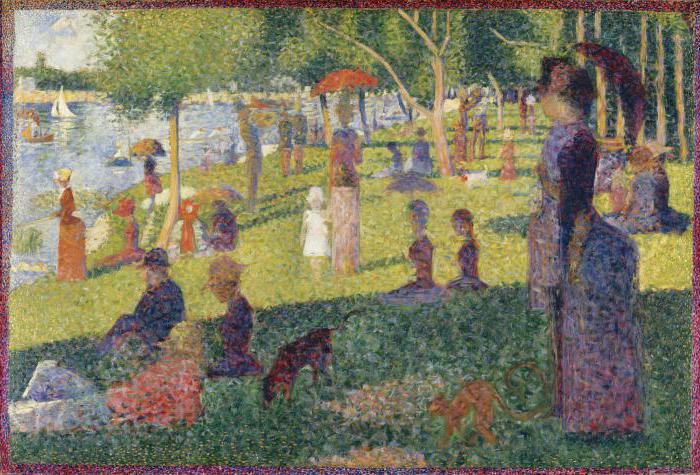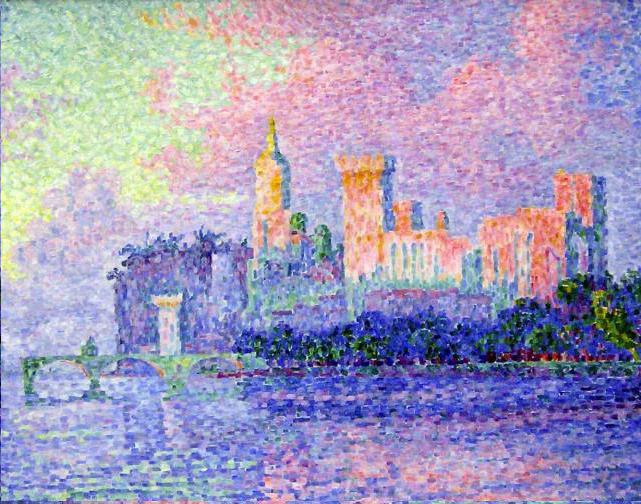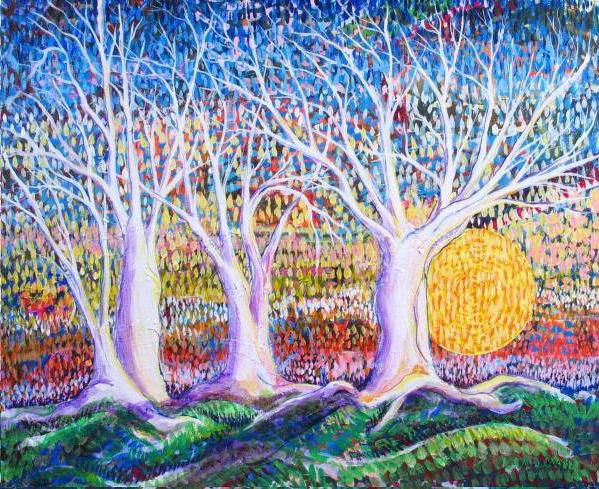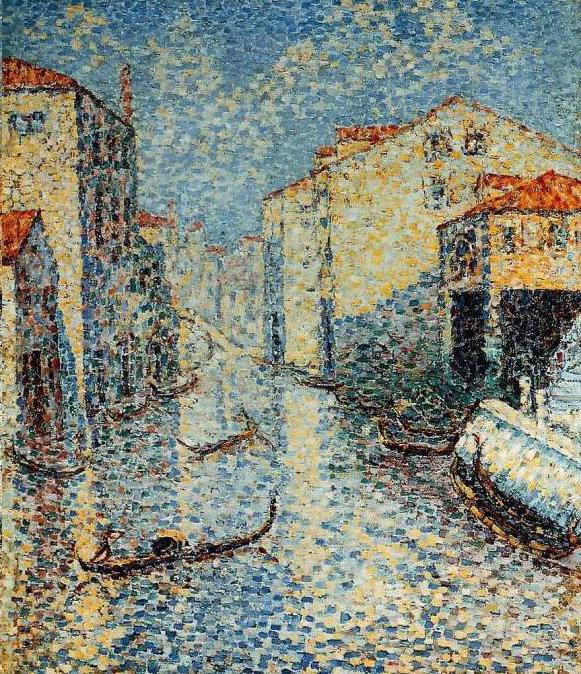The 19th and 20th centuries were rich in new directions in art. Artists experimented a lot, looking for new expressive forms and possibilities. And as a result of such searches, pointillism appeared in painting. Let's talk about what its specificity consists of, who invented it and who was especially distinguished in this style.
The meaning of the term
The style name “pointillism” comes from the French word “dot”. From the same word comes, for example, the name of ballet shoes - pointe shoes. The name is associated with the features of fine art. Pointillism in painting, therefore, can be described as a "point" style.
Pointillism History
At the end of the 19th century, French artists conducted active research in the field of theory, physics and the psychology of color. They wanted to find tools that would allow the author to convey their intent and emotional message to the viewer as fully as possible. The chemical color theory of Eugene Chevrell on the mutual influence of different colors on each other and the physical theory of Ogden Rud about color mixing gave impetus to new experiments and searches. Also at this time, there is great debate about the psychology of color, its symbolism and its effect on the psychoemotional state of man. All these scientific studies led to the fact that artists are beginning to take a fresh approach to painting technique. At this time, the impressionists conducted active research on the possibilities of paints for transmitting light-air and water space. They sought to convey the momentary, lively sensation of the movement of natural elements. Classical technology did not give them such an opportunity. As a result of searches and experiments in 1885, pointillism appears in painting. What is the peculiarity of this style?

Pointillism Method and Technique in Painting
The very name of the style speaks about the peculiarities of the style of writing. The artist writes in small square strokes. The movement of his brush resembles the light flutter of a butterfly, which only for a moment touches the canvas and again comes off from it. But the essence of the method is not only in the special overlay of the paint layer on the surface of the canvas. The search for special impacting opportunities on the viewer gave rise to pointillism in painting. How to draw in order to convey the beauty of the moment of nature and the feeling of the moment that the artist experienced? This is the main question that painters asked themselves in the late 19th and early 20th centuries. French artists, under the influence of scientific discoveries in the theory of color and light, and also thanks to the discovery of photography, which captures the moment of being, began to experiment with the application of paints on the canvas. And pointillism was one of the variants of the new technique. Paints in this style did not mix on the palette, as was customary in classical painting, but were superimposed in the initial form with small strokes. Moreover, contrasting, according to the coloristic circle, tones always coexisted nearby. Red was superimposed next to green, yellow - with blue, etc. This made it possible for the eye to perceive a living sensation of air and light. When perceiving the picture, the human eye itself produced a mixture of colors, and a multicolored work was obtained. The technique of pointillism is very complex and painstaking. It is similar in its decorativeness and laboriousness to mosaic. But the artists were not afraid of such a volume of work, since it allowed to solve the set artistic task.

Founders
In 1885, a new style in painting appeared - pointillism, its birth is connected, first of all, with the name of the French artist Georges Seurat. He was disappointed in the classical pictorial manner and sought to find his handwriting. To do this, he actively studied scientific works on color theory. He was greatly influenced by the already mentioned works in physics and chemistry, as well as Charles Blanc's research on color. Sera resolutely abandoned the impressionist approach to painting, based on instant sensation. He believed that the artist should proceed from scientific discoveries. The creator, in his opinion, should not rely on inspiration or momentary sensation, but should carefully calculate his every step based on psychophysiological and physical knowledge. The artist first formulated his discoveries in the field of color science in the theory of chromoluminarism, and later justified a new approach - divisionism or pointillism. In 1884-86, he wrote a huge canvas, which later became very famous - "Sunday on the island of Grand Jat." Its size - two by three meters, was designed for perception at a distance. Work has become a classic of pointillism. Unfortunately, Sera did not have time to fully develop his theory and translate it into works, he died at a young age, and in the future the direction is connected with the name of his student, a former Impressionist Paul Signac.

Pointillist Artists
It was Signac who brought the theory to the absolute and told the world what pointillism in painting is. Pictures of reproductions of his works appeared in magazines and postcards, as they were very decorative and unusual. Signac not only wrote and perfected pointillism in his canvases, but also created a serious theoretical work “From Eugene Delacroix to Neo-Impressionism”, which became a kind of textbook for artists of this direction. The artist was mainly engaged in painting landscapes, and the point technique allows him to achieve incredible atmosphericity and airiness. Signac also experimented in graphics and in black and white painting. The success and unusual effect of work in the style of pointillism attracted the attention of other outstanding painters. At the end of his life, Camille Pissarro worked in point technique, and V. Van Gogh tried his hand in this technique. The famous pointillists were S. Angran, M. Luce, T. van Reisselberg, A. Lodge, A. E. Cross. This style has not lost its relevance to this day. But such mass pointillism as at the turn of the 19th and 20th centuries was gone. The most famous contemporary pointillists are Benjamin Laading and Miguel Endara.

Pointillism works
Classical pointillism in painting is represented by the works of Georges Seurat: “Circus”, “Ships at Sea”, “Bathers at Agnier” and Paul Signac: “Harbor in Marseille”, “Breakfast”, “Venice, pink cloud”. As well as experimental works by Van Gogh “The Sower and the Sunset”, A. Matisse “Parrot Tulips”, paintings by K. Pissarro “Hampton”, “Haymaking in Eranyi”, “Children in the Manor’s Courtyard”. Today, works in this technique are masterpieces that museums and collectors hunt for. After all, there are few such canvases, and they are real rarities.